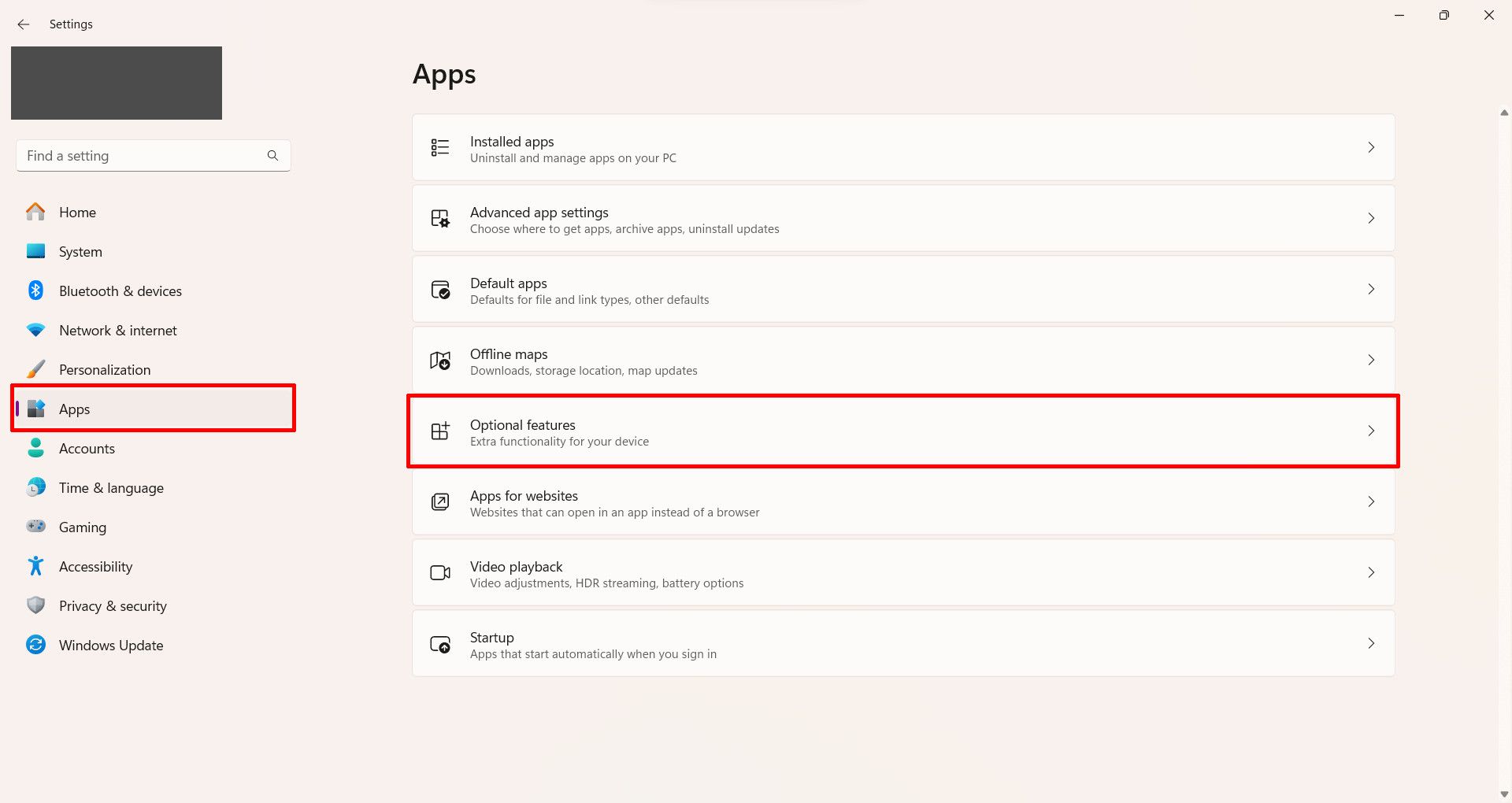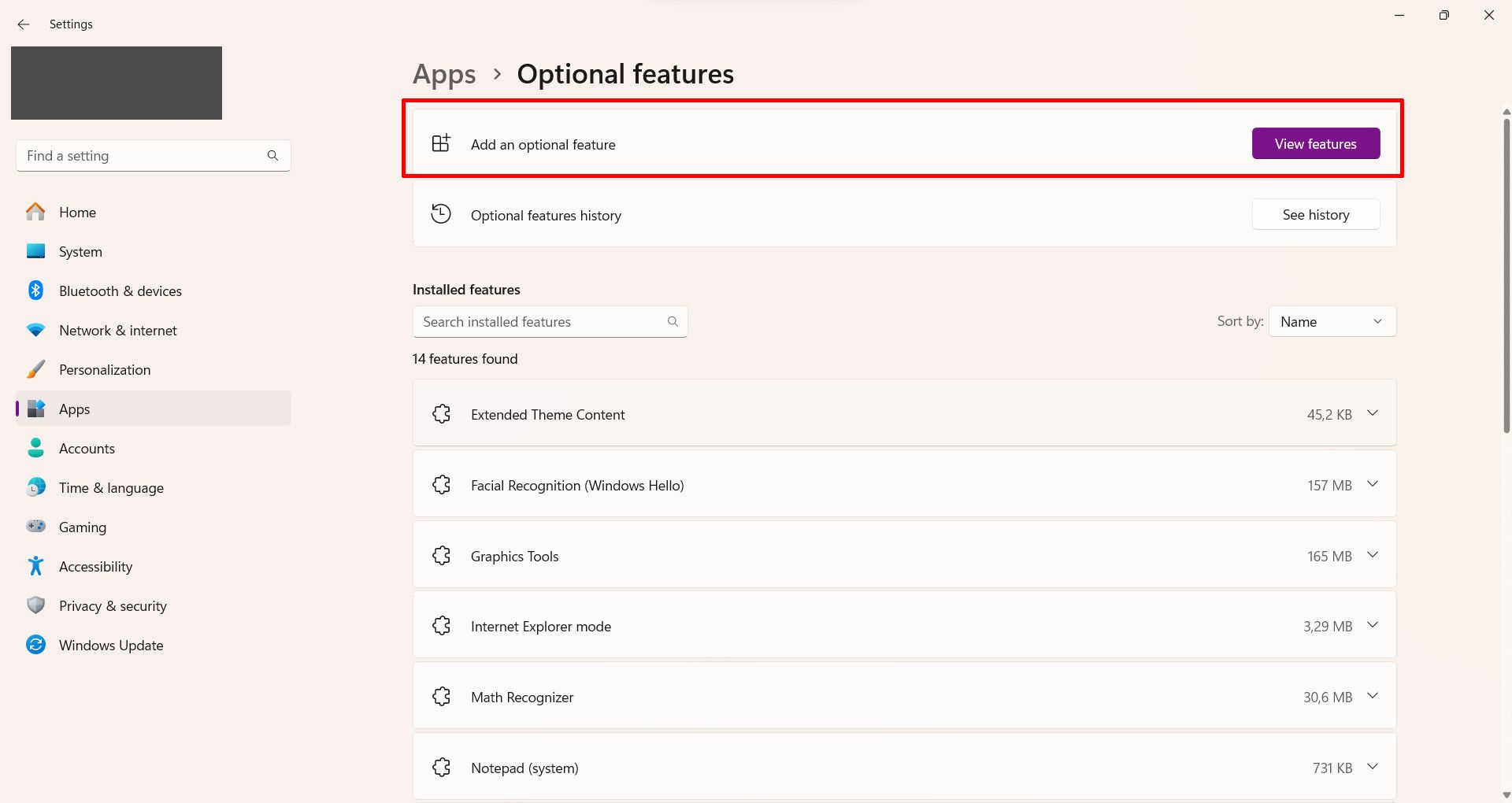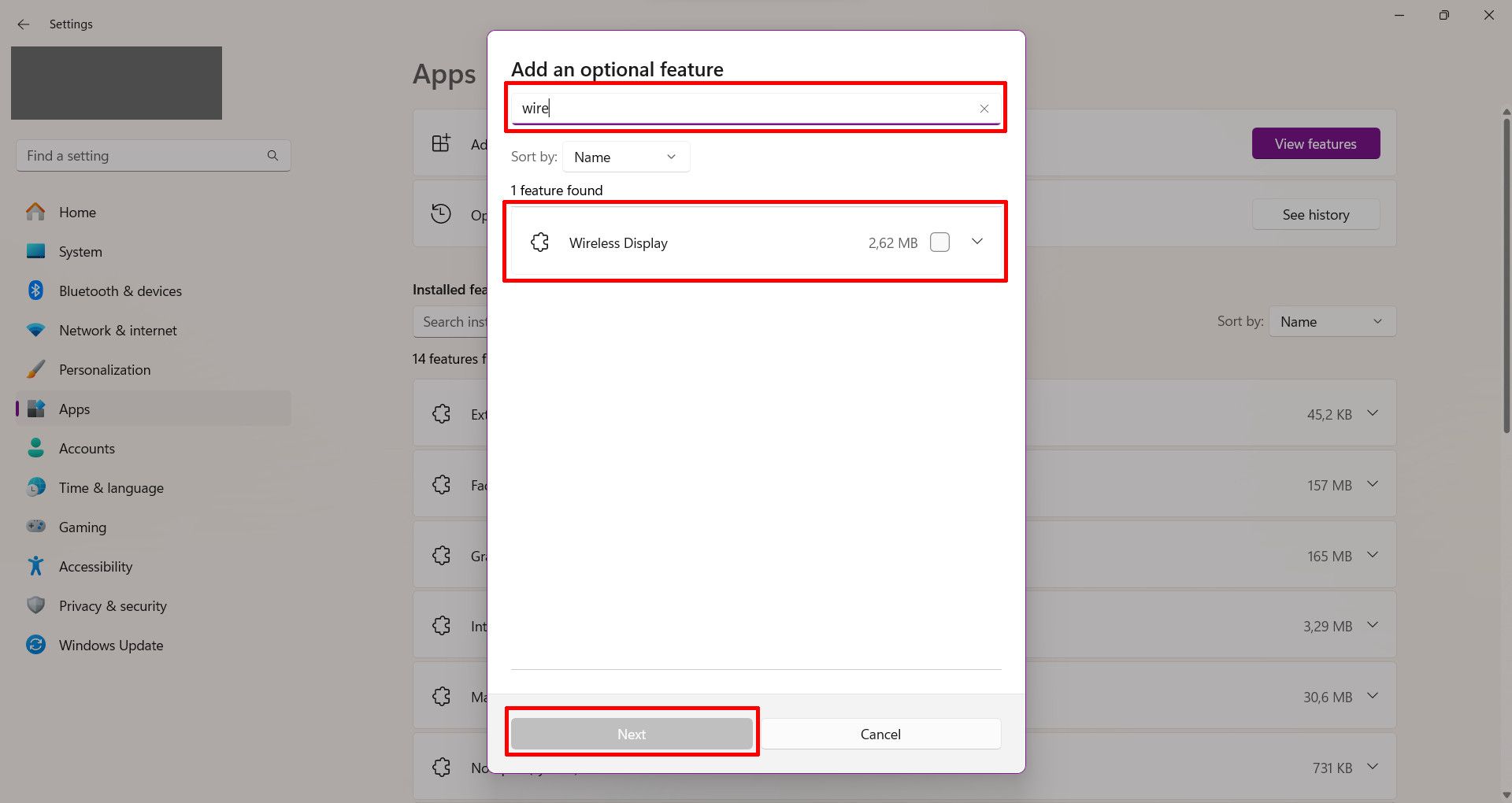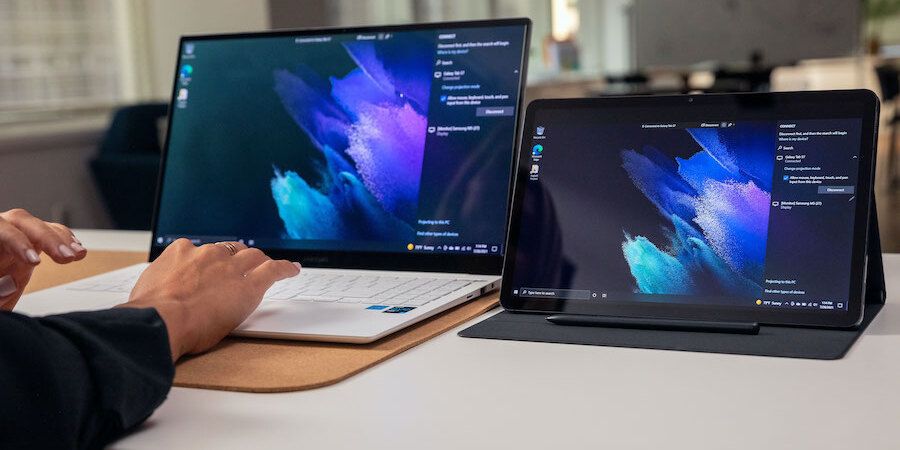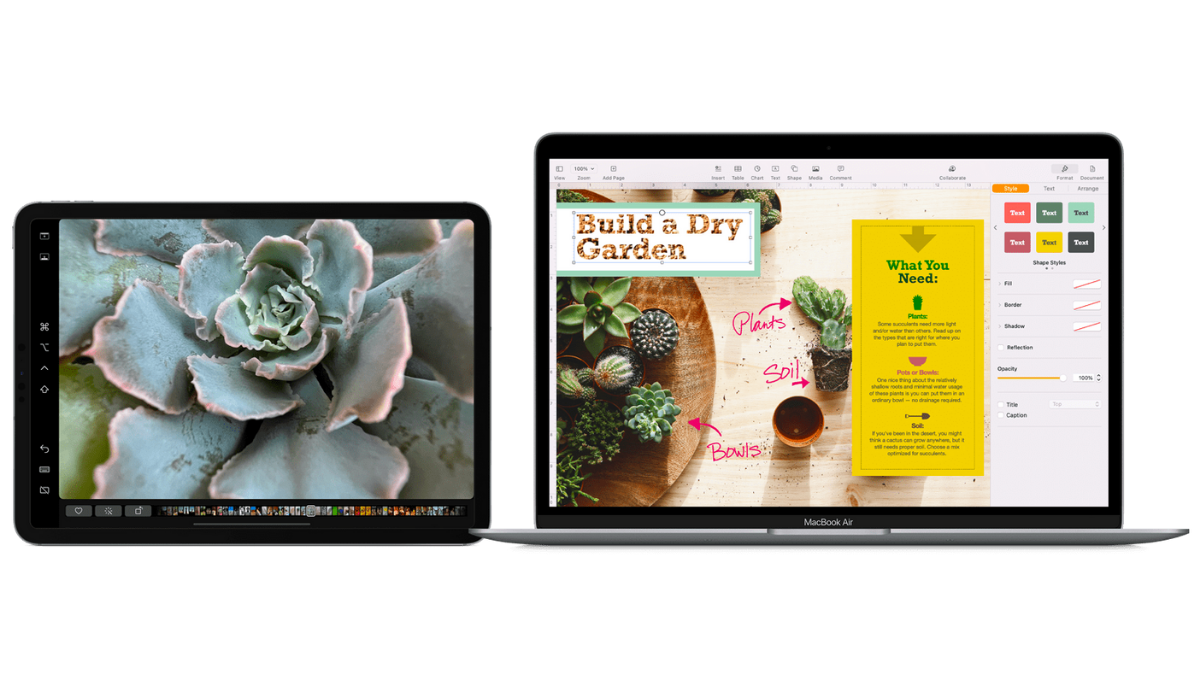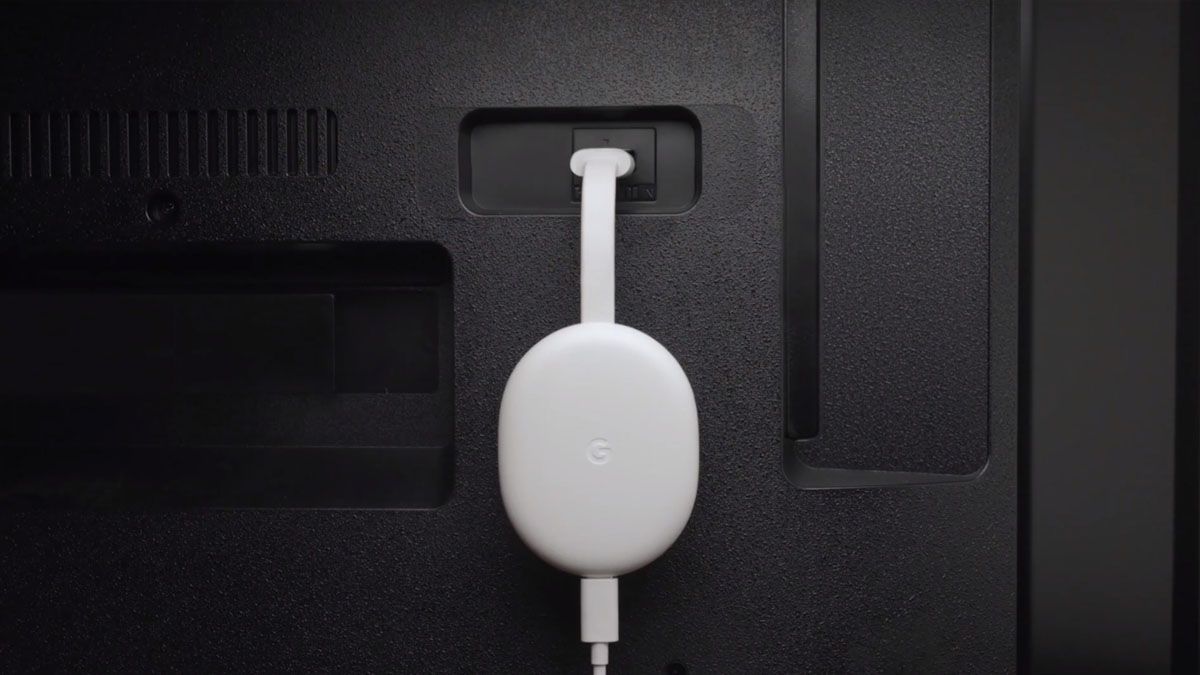If managed effectively, a multi screen setup does wonders for productivity. If no cable is available, you’ll need to go wireless, which can pose some challenges. These tools will make it easier.
Struggling With Wireless Screens
AirPlay and Cast are ubiquitous, but only for recent devices. Places like hotels or conference rooms don’t always offer the best TVs, instead using older models that lack support for newer technologies.
There are a lot of apps to overcome that limitation. Some of them emulate a device that supports the wireless screen standards, while others work with proprietary protocols.
Needing to rely on a couple of old TVs as my secondary monitors, I tried dozens of those. Only a few of them—listed below—are worth their salt. For that article, we’ll focus on wireless display options for Windows.
The Million-Dollar Question on Wireless Screen Sharing
The key consideration for wireless screen sharing is the operating system (OS) of the target device—the one that will receive the images. That will determine the available apps.
Therefore, the list below is sorted by target OS. But remember: in all cases, the computer that is sending the images runs Windows.
1. Use a Windows PC as a Wireless Display for Another Windows PC
Since Windows 10, Microsoft has included a feature that allows computers to work as wireless displays for other devices. You do have to install a “Windows Feature”, but that’s extremely easy.
Open the Settings app, then go to the “Apps” menu.
Click “Optional features” and then “Add an optional feature”.
Search for “Wireless display”, then click on “Install”—it takes a few minutes to enable the feature.
Now we need to set up the projecting permissions. On the search bar, type “Projecting to this PC”.
The first drop-down menu lists in which cases you want the computer to be shown as a wireless display. The second defines how frequently you’ll be prompted to allow projecting: just the first time that each device connects, or every time. The same options are in the third menu, but this one is about whether to require for a PIN to connect.
That’s it, you’re good to go. Your computer will be listed as a Cast device as long as the option is enabled. The best part? It runs in a resizable window, so you can even use a large screen for two computers.
2. Casting Windows Screen to Android Devices
Android TV is the only version with native Cast capability, so tablets need third-party solutions. As for phones… Well, they technically do work, but the screens are so small they’re useless.
Image credit: Samsung
Owners of Samsung tablets (Tab S7 or newer) are better served. The Second Screen option—available in the Quick Settings menu—does exactly what the name suggests. If your device is from another brand, then you’ll need a trip to the Play Store.
There are three types of solutions: the complicated but free, the simple but paid, and the seamless but expensive. We’ll cover a few options of each kind.
Free Wireless Screen Share From Windows to Android
There are dozens of wireless display apps for Android. Most of them have so much delay and an image quality so poor you can count them as unusable.
The two that work best are Let’s View and Deskreen. They have different approaches to mirror the screen on Android via Wi-Fi, but both are unbeatable at this (free) price range.
Let’s View needs to be installed on both devices: the one that sends the images and the one that receives them. Unlike many of the other options, wireless screen mirroring is Let’s View sole function, so it excels at it.
Deskreen also is a master of its single trade. This app implements a clever solution by mirroring your computer’s screen to a browser tab, so you only need to install the app on the computer sending the images.
The downside of Deskreen is that it isn’t able to extend the desktop by itself. Only mirroring is supported out of the box. There are workarounds using dummy display adapters—more on that in a pinch—or virtual monitors (like this project on GitHub), but both defeat the purpose of having an easy-to-use solution at hand.
Best Paid Apps to Use Android Tablet as Wireless Second Screen
If you think the free options have too many downsides, there are paid alternatives. They have better support and, in general, performance above their unpaid counterparts.
AirDroid Cast is probably the better-known of those. It has a free tier, but the paid subscriptions ($20 for casting only, $30 to add remote desktop; both annually) have far more options, like USB connection and AirPlay support. It also requires apps installed on both devices.
Possibly the more cost-efficient solution is AirScreen. Subscription price varies by country, but the annual fee is around $10. This app emulates a Cast (or Airplay, but that’s a topic for another article) device, so you don’t need to install an app on the computer. AirScreen has versions for Android, Android TV, and Fire OS.
Best Way to Use Android Tablet as Wireless Display
If your budget isn’t tight, the best possible solution to connect an Android Tablet as a wireless monitor is Luna Display. It costs from $60 to $80 but gives you the ultimate wireless display solution.
Luna Display mixes hardware and software to provide a seamless wireless screen solution. For the price, you get a pair of dongles (USB-C, HDMI, or Mini DisplayPort) and the companion app. Just insert each dongle into a device, launch the app, and set them up.
The main downsides are compatibility (only USB-C with Alt Mode, Mini DisplayPort, or HDMI) and latency: while better than software-based solutions, Luna Display still doesn’t compare to a wired connection.
3. Casting a Windows Screen to iPad
This may seem impossible at first since Apple is known for their “walled garden” approach. The Sidecar feature allows macOS computers to use iPads as wireless monitors, but Windows can’t do that officially.
Emphasis on “officially”. Free and paid solutions exist to close this gap—including AirDroid and Let’s View, mentioned before.
Another multi-platform option is Spacedesk. This app mainly intends to create “video walls”—grids of screens that work as a single display. It allows you to use an iPad as a wireless display for a Windows PC more as a side effect. The initial setup isn’t too complicated, but again the app needs to be installed in both devices.
4. Mirror or Extend Windows Display to macOS Wirelessly
Some might call it a heresy, but there are ways to use a Mac as a secondary screen for a Windows computer. Including some of the above: Spacedesk, AirDroid, and Let’s View.
Duet is another option. It is paid and—again—requires installation on both sides, but is the wireless display app with the least delay. Duet’s annual subscription is on the costly side: $50 for casting with average quality, $60 to add remote desktop and improve definition.
5. Wireless Display From Windows to a Smart TV
This is perhaps the easiest method. If you’re trying to mirror or extend the desktop wirelessly to a smart TV, all major platforms including Tizen, WebOS, Fire OS, Roku, and Android TV have native solutions. Cast (Miracast for older models) is available in all of them. Some are also compatible with WiDi, a similar standard created by Intel.
6. Workarounds to Cast Screen From Windows to Unsupported Devices
Lastly, there are two types of devices that aren’t at all compatible with being used as wireless displays: non-smart TVs or monitors that lack a full-fledged OS, and computers running Linux.
The first situation can be solved with devices like Chromecasts, Fire TV Sticks, or Roku Express. The Apple TV, while serving a similar function, isn’t compatible with Windows (but works great with other Apple devices).
The second situation, a Linux device, requires more elbow grease. You can’t directly cast content to a Linux computer, no matter what’s the video source’s OS. One possibility is using the previously mentioned Deskreen or remote desktop clients like AnyDesk, TeamViewer, or VNC solutions.
All of them only work to mirror the screen. Therefore, you’ll need a dummy display adapter—as of 2023, there are no working virtual monitor solutions for any Linux distro.
If this is the only option you have available, we have an article on Deskreen which explains the dummy adapter solution in further detail. Simply put, it’s a kind of dongle you plug into the HDMI port that makes your computer think there’s an actual screen connected. It is a useful tool for this type of situation but, if you’re going to buy one of those online, perhaps adding one of the best HDMI cables to your shopping cart is also a good idea.


